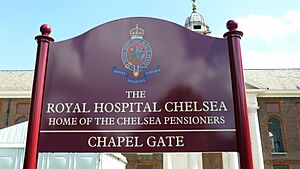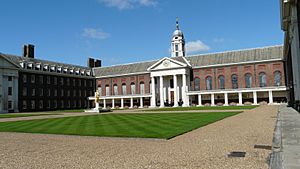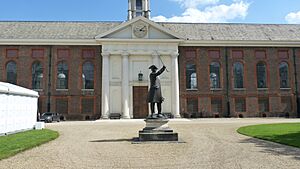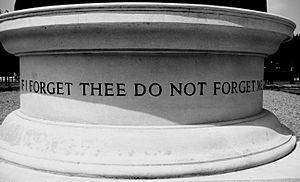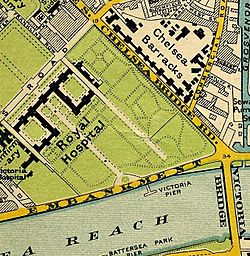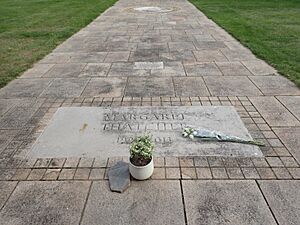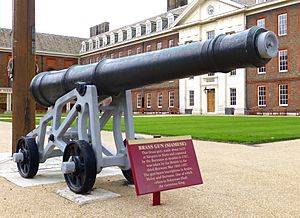Royal Hospital Chelsea facts for kids
The Royal Hospital Chelsea is a special home for about 300 British Army veterans. It's like a retirement and nursing home for soldiers who have served their country. King Charles II started it in 1682. Back then, "hospital" meant a place for care, like an almshouse.
This hospital is on a 66-acre site in Chelsea, London, on Royal Hospital Road. It's a charity that needs donations to help care for the veterans living there. The people who live here are called Chelsea Pensioners. The beautiful gardens around the Royal Hospital are also very important and are listed as historic parks.
Contents
History of the Royal Hospital
King Charles II decided to create the Royal Hospital in 1682. He wanted a place for soldiers who were old or injured after serving in the army. Some stories say that Nell Gwyn, a famous person at the time, gave him the idea. The King was inspired by a similar place in Paris called Les Invalides.
The land chosen for the hospital was in Chelsea. There was already an unfinished building there from a college started by King James I. Sir Stephen Fox, a trusted helper of the King, was a big part of making the hospital happen. He was in charge of paying the army and gave a lot of his own money, £13,000, to help build it.
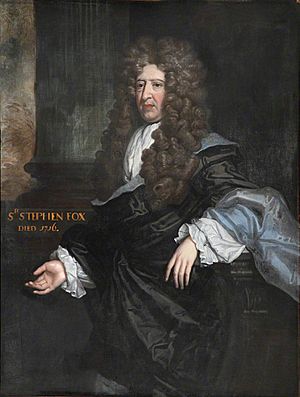
The Royal Hospital opened its doors to the first Chelsea Pensioners in 1692. These first soldiers included some who were hurt in the Battle of Sedgemoor. The famous architect, Sir Christopher Wren, designed the main buildings. The hospital was finally finished in 1692.
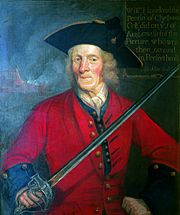
Later, in the early 1800s, Sir John Soane designed a new infirmary, which is like a hospital within the hospital. This building was damaged during the Second World War. A new, modern infirmary was built and opened in 1961 by Queen Elizabeth The Queen Mother.
This 1960s infirmary was later replaced by the Margaret Thatcher Infirmary. It was designed by Sir Quinlan Terry and finished in 2008. This new building offers very modern care for the pensioners.

In 2002, the hospital received a special ceremonial mace. This mace is now carried at all important events at the hospital. It was designed by Charles Webb and Aubrey Bowden.
A big change happened in March 2009. For the first time in 317 years, women were allowed to become Chelsea Pensioners. Winifred Phillips and Dorothy Hughes were the first two women to join. Winifred Phillips was a nurse and served in the Women's Royal Army Corps. Dorothy Hughes joined the British Army in 1941 and helped defend against V1 flying bombs.
Chelsea Pensioners' Uniform
Chelsea Pensioners can wear their own clothes when they leave the Royal Hospital. But when they are inside the hospital or nearby, they usually wear a blue uniform. This is called their "blues." If they travel further away, they wear a bright red coat instead. The famous scarlet coats are also worn for special events and ceremonies. With the red coats, they wear a three-cornered hat called a tricorne.
When in uniform, the pensioners proudly display their medal ribbons and the badges that show their rank from their time in the military. Many also wear special badges like parachute jump wings.
Founder's Day Celebration
Founder's Day is a special event held each year around May 29th. This date is important because it's the birthday of King Charles II, who started the hospital. It also marks the day he became King again in 1660. This day is also known as Oak Apple Day. It remembers when King Charles II hid in an oak tree to escape capture after a battle. On Founder's Day, a member of the British Royal Family reviews the Chelsea Pensioners.
Statue of King Charles II
In the middle of the hospital's main courtyard, called the Figure Court, stands a large statue of King Charles II. It is 7 feet 6 inches (229 cm) tall and was made from copper by Grinling Gibbons. It was originally covered in gold. In 2002, it was re-gilded (covered in gold again) to celebrate Queen Elizabeth II's Golden Jubilee.
The Chapel
The hospital's chapel was designed by Sir Christopher Wren. It is a beautiful example of his church designs. The chapel is 42 feet (12.8 meters) high and was finished in 1687. Inside, there is a lovely painting of the Resurrection by Sebastiano Ricci. The chapel was officially opened in 1691. Services are now held on Sunday mornings and for special military events.
The Great Hall
The Great Hall was also designed by Sir Christopher Wren. It was first used as a dining room for the pensioners. It has a large painting from around 1690. This painting shows King Charles II on horseback, being crowned by a figure of Victory.
Around 1800, the pensioners started eating in their own wards. The Great Hall was then used for fun activities. In 1852, the coffin of the Duke of Wellington rested here. The table where his coffin lay is still near the entrance. In 1955, the hall became a dining room again.
State Apartments
The State Apartments have fancy ceilings and wood carvings. The room was finished between 1685 and 1688. These rooms, including the Council Chamber, can be rented for private events and weddings.
Margaret Thatcher Infirmary
The Margaret Thatcher Infirmary is a modern care home for about 100 Chelsea Pensioners. It was opened in 2009 by Charles, Prince of Wales. It has nursing care and a doctor's surgery. The Matron leads a team of nurses and therapists. The infirmary also has a gym and a special pool for pensioners. They can join many activities, from pottery to poetry. In 2015, it received a top award for its excellent care.
Special Ceremonies
The annual Ceremony of the Christmas Cheeses is a very old tradition. It started in 1692 when the hospital asked a local cheesemonger to give cheese to the pensioners for Christmas. Now, cheesemongers from all over the country donate cheese. A Chelsea Pensioner cuts a ceremonial cheese with a sword, and it's shared among everyone for Christmas.
Another yearly tradition is the Christmas Cake Ceremony, which began in 1949. This shows the friendship between the UK and Australia. A Christmas cake is given to the hospital from Australia. Again, a pensioner cuts the cake with a sword.
Visiting and Events
The Royal Hospital has a museum that tells the story of the hospital and its pensioners. You can see old items, documents, medals, and uniforms. There's also a large model showing the hospital in 1742. You can book walking tours led by Chelsea Pensioners themselves.
The hospital's South Grounds are also used for big public events. The famous Chelsea Flower Show is held here every year by the Royal Horticultural Society. It has been held in the grounds since 1913 and attracts many visitors.
In September 2022, the hospital was a meeting point for world leaders and important guests. They gathered here before going to Westminster Abbey for Queen Elizabeth's funeral.
The Singora Cannon
Near the flagpole, there is an old cannon called the Singora Cannon. It has an interesting history! It was made in Singora around 1623. Then, it was captured by the Siamese in 1680. Later, the Burmese took it from the Siamese in a war between 1765 and 1767. Finally, the British took the cannon during the third Anglo-Burmese War (1885–1887) and brought it to England.
How the Hospital is Run
The Royal Hospital has a military-style culture. This means teamwork and friendship are very important. The pensioners are divided into four groups, called companies. Each company has a Captain of Invalids, who is an ex-Army officer. They look after the pensioners in their group.
There is also a Secretary who manages the hospital's money, staff, buildings, and grounds. Other important staff include the Physician & Surgeon, the Matron, the Quartermaster, the Chaplain, and the Adjutant.
A group called the Board of Commissioners has overseen the Royal Hospital since 1702. Their job is to guide the hospital, make sure the residents are cared for, and protect the historic buildings and grounds.
See also
 In Spanish: Royal Hospital Chelsea para niños
In Spanish: Royal Hospital Chelsea para niños
- Chelsea Flower Show
- Healthcare in London
- List of hospitals in England
- International
- Royal Hospital Kilmainham (a similar place in Dublin)
- Les Invalides, the French equivalent of the Royal Hospital
- Old soldiers' home (USA)


